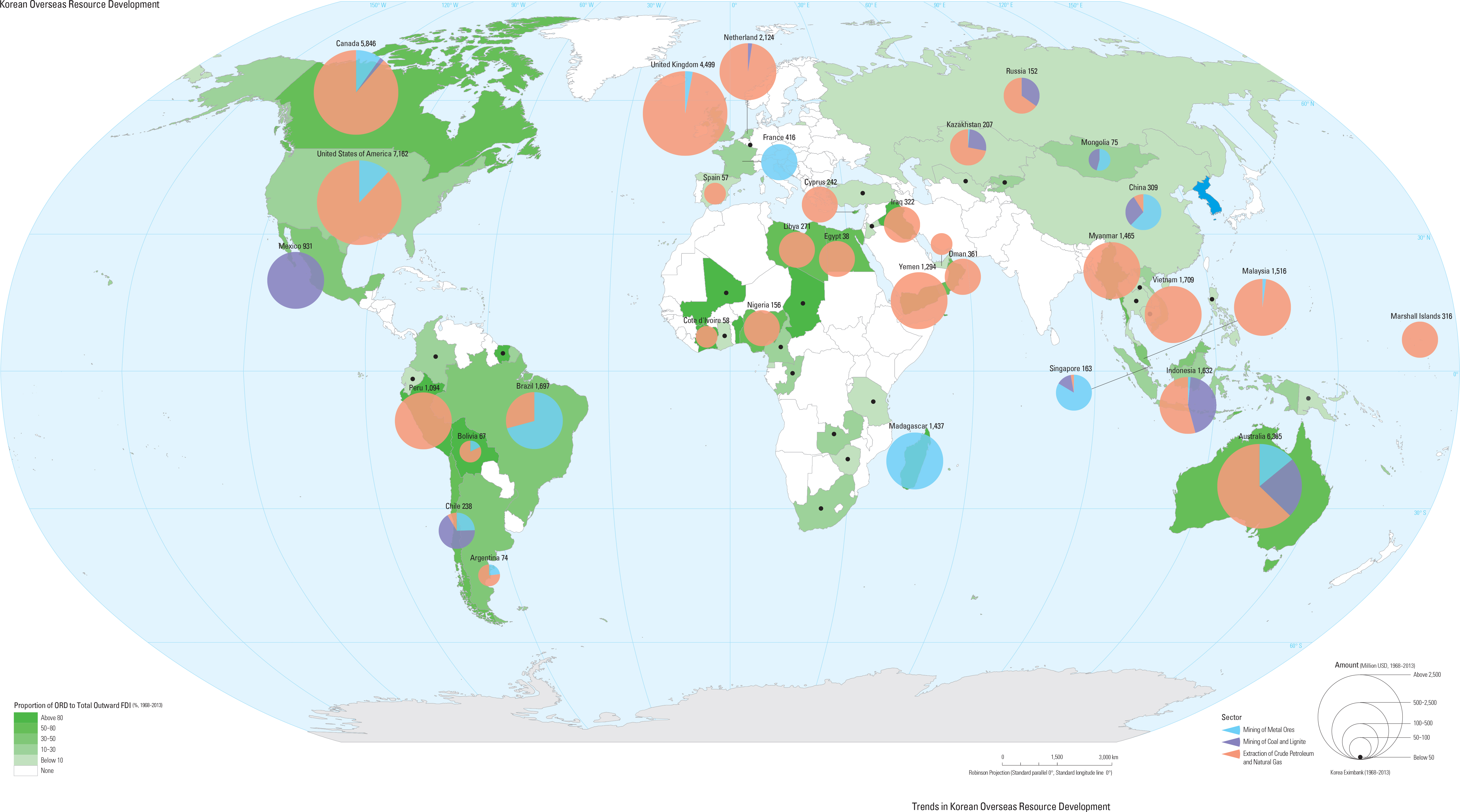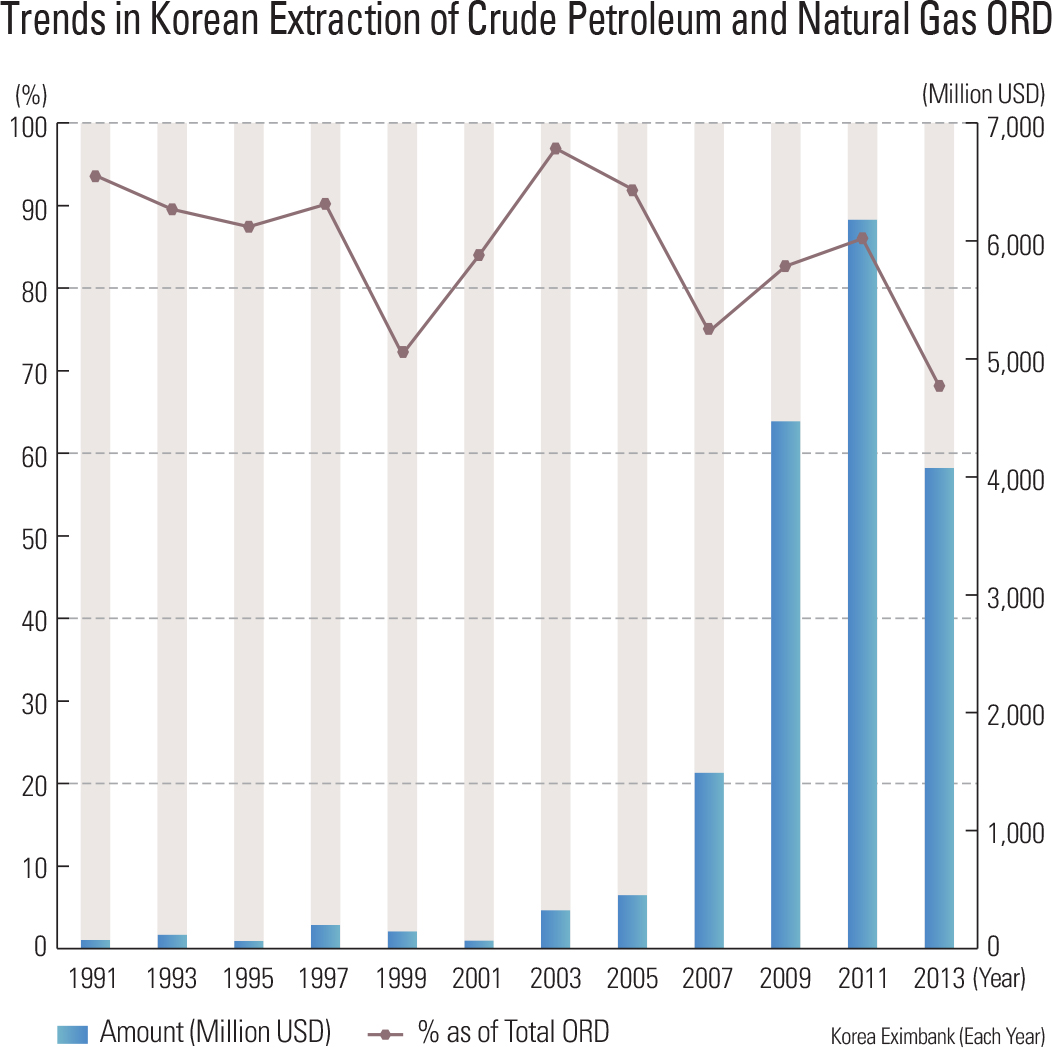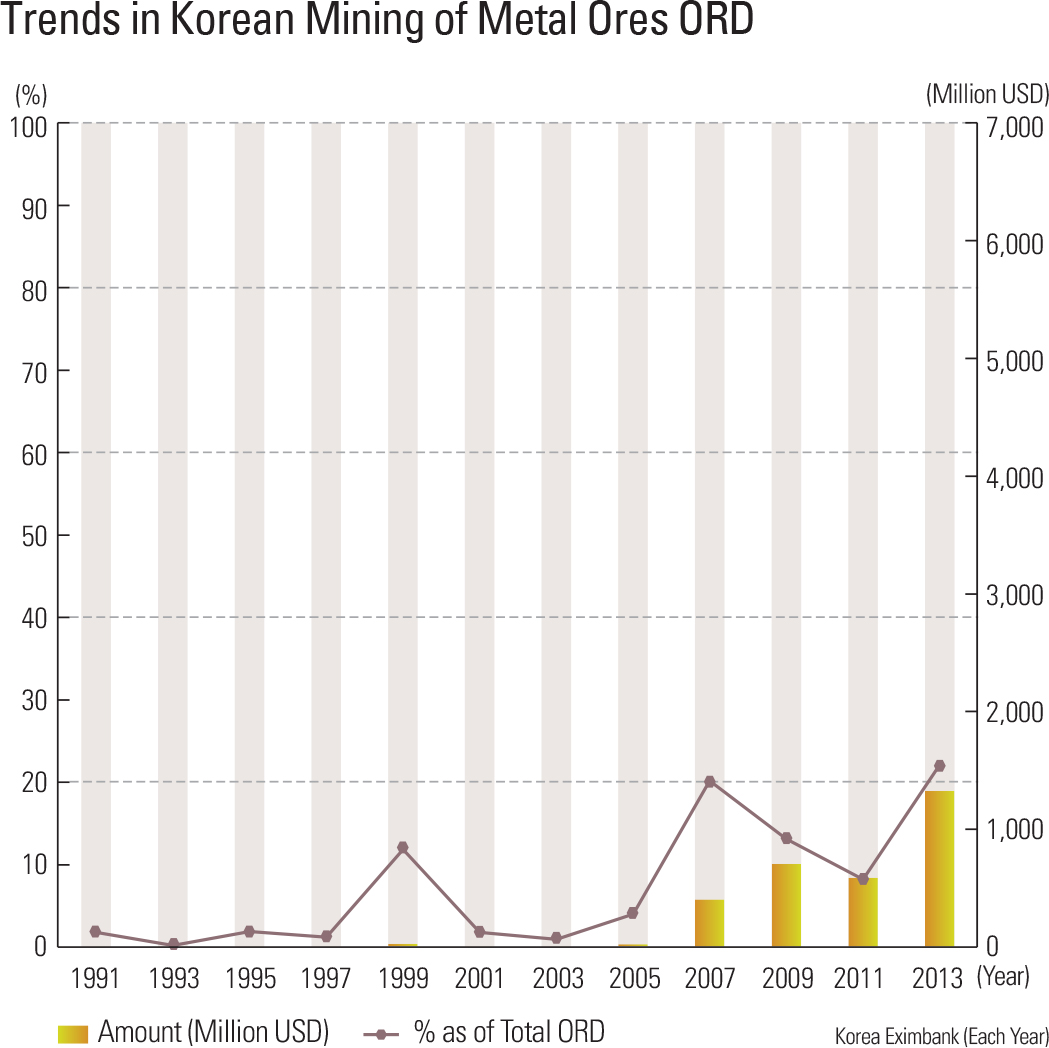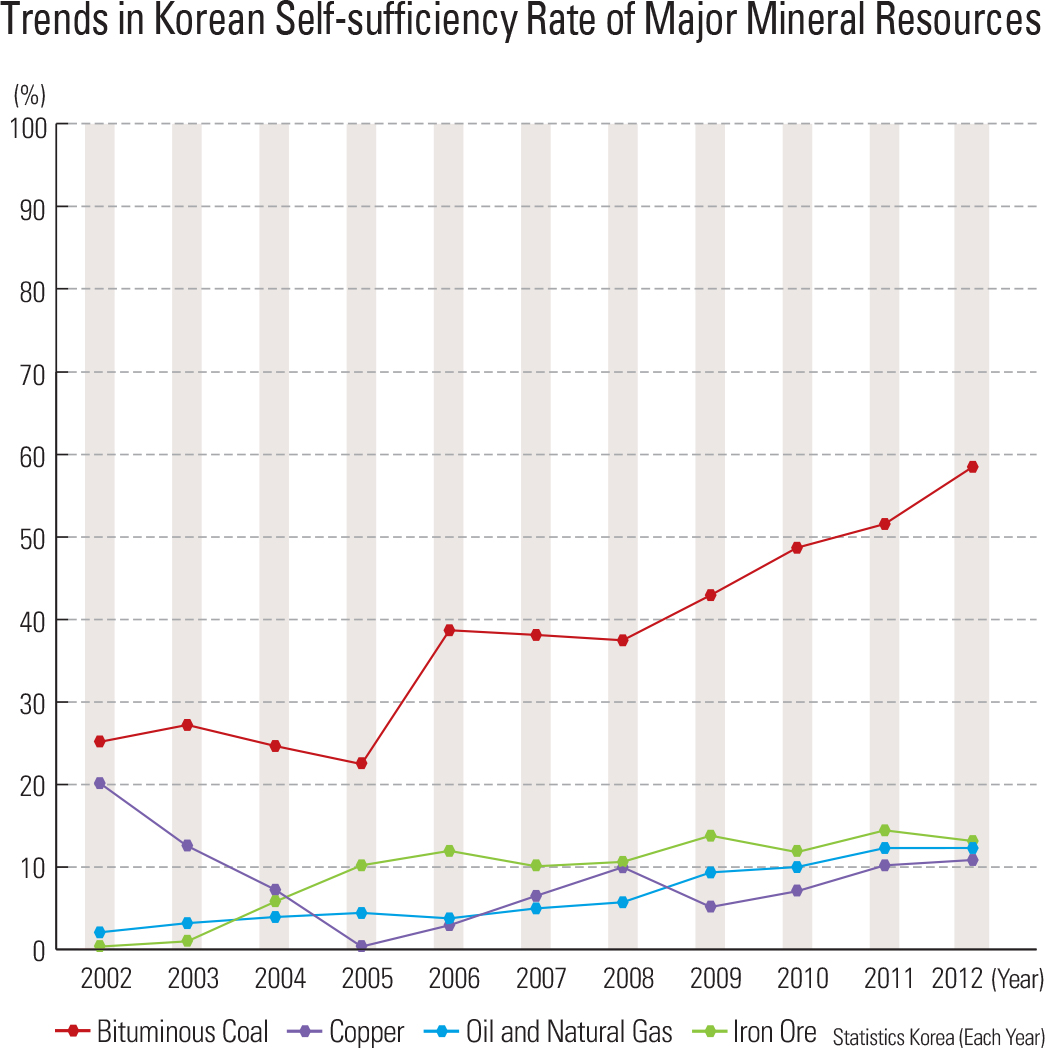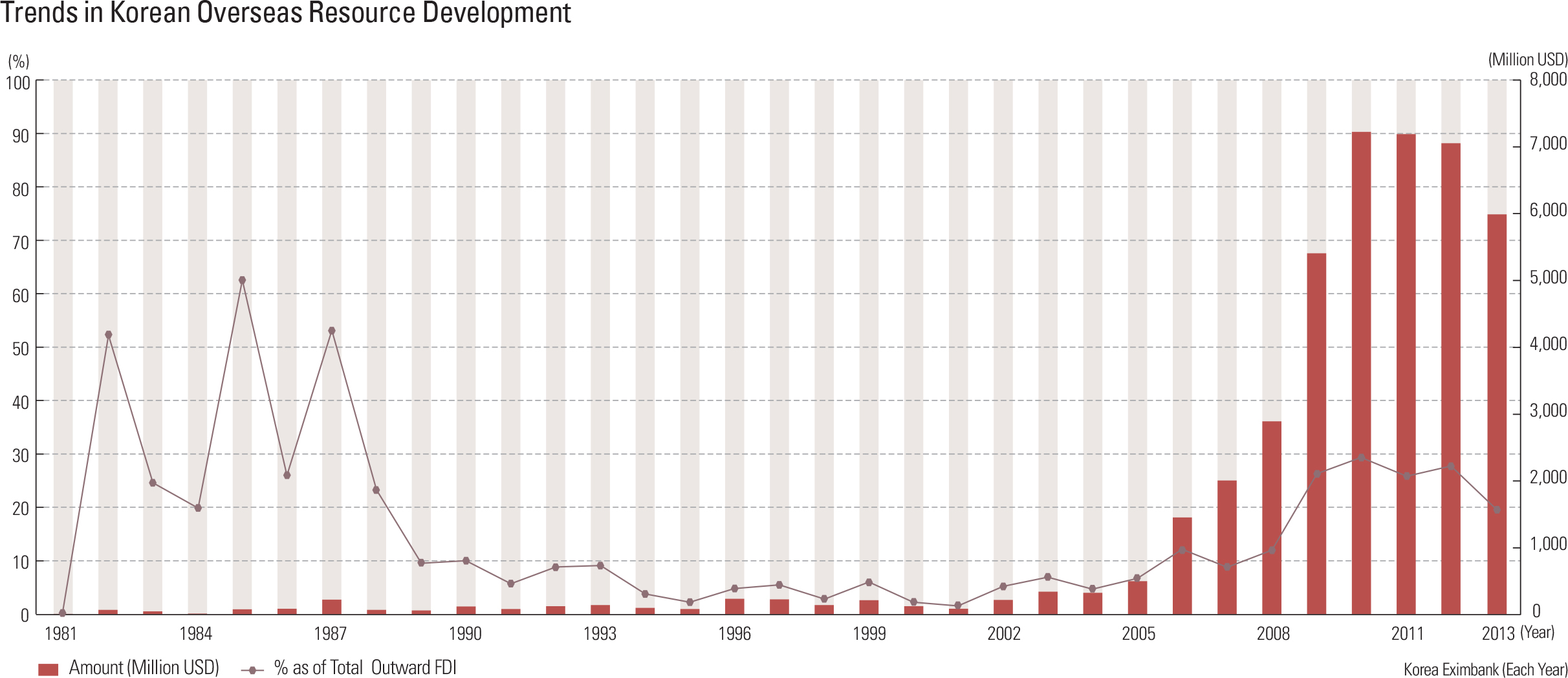Korea depends on imports. The energy sector in particular is heavily dependent on imports, which account for 96% of total energy consumed domestically. Increasing oil prices and expanding resource nationalism have created resource market instability. In order to mitigate the threats to the Korean economy from such instability, Korea has sought out various overseas resource development (ORD) opportunities. ORD also alleviates external shocks caused by the deterioration of the international supplydemand balance.
The Korean government has promoted ORD since 1977 and has increasingly remarkable achievements in recent years. Korean ORD has increased significantly since 2005. In 2006, Korea invested over 1 billion USD on ORD. In 2013 ORD investment rose to 6 billion USD, 50 times more than what was spent in 1990. The proportion of ORD among the total outward FDI has also increased significantly since 2007. Specifically, it has increased from 8.8% in 2007 to 27.8% in 2012. The high proportions of ORD (over 50%) in the early and mid-1980s are attributed to the relatively small investments in the manufacturing and service sectors. The extraction of crude petroleum and natural gas sector has traditionally been the major target of the Korean ORD. Recent trends, however, show a decreasing proportion of those targets, while some increases appear in mineral resources sectors such as coal, nonferrous metals, and iron ore. More specifically, Korean ORD in the extraction of crude petroleum and natural gas has shown great growth for the last 20 years, but its proportion has dropped due to the diversification of Korean ORD since 2007. For example, the proportion of Korean ORD in the extraction of crude petroleum and natural gas has decreased from 96.9% in 2003 to 68.1% in 2013, while the proportion of metal ores mining and coal and lignite mining has increased from 0.9% and 2.2% in 2003 to 22.1% and 9.8% respectively in 2013.
As Korean ORD has experienced rapid growth, the self-sufficiency rate of mineral resources has also increased significantly. For example, the selfsufficiency rate of crude petroleum and natural gas has increased from 2.8% in 2002 to 13.8% in 2012. In particular, self-sufficiency rate of bituminous coal has increased dramatically from 24.2% in 2002 to 57.7% in 2012. The self-sufficiency rate of iron ore has also grown from 0.8% in 2002 to 14.5% in 2012.
